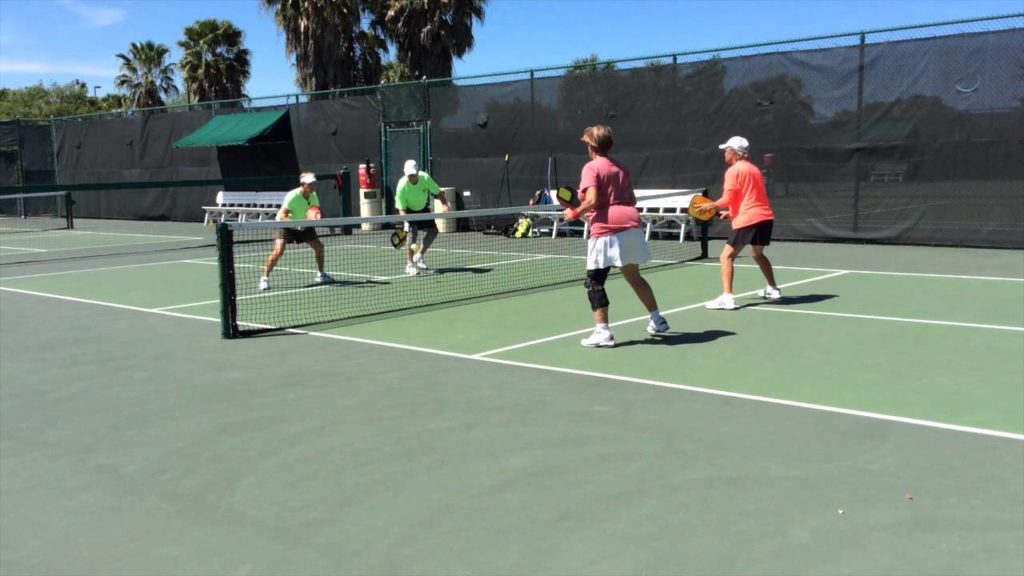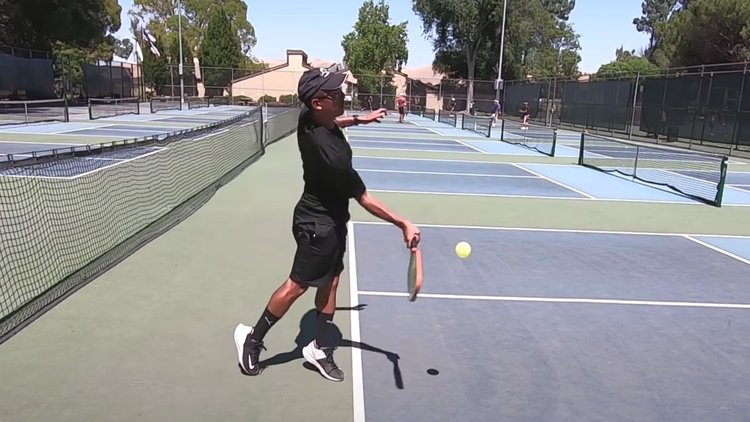Mastering the Dink in Pickleball: Common Mistakes and How to Fix Them
If you love playing pickleball, you know how fun and exciting it can be. But to take your pickleball game to the next level, you must master the dink.
Dinking is one of the essential skills in pickleball, as it allows you to control the pace of the game, move your opponents around, and set up opportunities for winning shots. However, many players need help with dinking and make mistakes that cost them points and games.
In this article, we will cover some of the things that kill your dinking game in pickleball and how to fix them.
What Is Dink in Pickleball?
Before we dive into the common dinking mistakes, let’s first define what a dink is in pickleball.
A dink is a soft, controlled shot played just over the net, typically landing in the non-volley zone (also known as the kitchen). Depending on the situation and the player’s intention, a dink can be offensive or defensive. Depending on the shot angle and placement, a dink can be cross-court or straight across.
Dinks are used to extend the rally as long as possible until your opponent makes a mistake or allows you to attack. A dink also prevents your opponent from hitting hard shots back at you, as it keeps the ball low and close to the net. A good dink requires touch, accuracy, consistency, and variation.
5 Things That Kill Your Dink Game
Now that we know what a dink is and why it is essential let’s look at some of the things that are killing your dinking game in pickleball and how to fix them.
1. Hitting Too Hard or Too Soft
One of the most common dinking mistakes is hitting the ball too hard or too soft. If you hit your dink too hard, you risk giving your opponent an easy volley or a high bounce they can slam back at you. If you hit your dink too soft, you risk hitting the net or leaving the ball short and vulnerable to a drop shot or a lob.
You need to practice hitting your dinks with the right amount of touch and spin to avoid this mistake. Using your paddle’s face angle and wrist action, you can control the ball’s trajectory and speed. You want to hit your dinks with enough force to clear the net comfortably.
However, you want to avoid hitting them so hard that they bounce high or fly out of bounds. You must also hit your dinks with enough spin to make them drop quickly and stay low after bouncing.
An excellent way to practice this skill is to play 21 with a partner. In this game, you only hit dinks back and forth until someone reaches 21 points. You can also use targets or cones to aim for different areas of the kitchen and challenge yourself to hit them consistently.

2. Not Moving Your Feet or Positioning Yourself Well
Another mistake you should avoid is not correctly moving your feet or positioning yourself. A successful dink requires proper footwork and positioning; you must reach the ball comfortably and hit it before you. If you move your feet or position yourself well, you can avoid hitting the ball late, behind you, or off balance. It results in poor accuracy, consistency, and power.
To avoid this mistake, you must practice moving your feet quickly and efficiently, using small and shuffle steps to adjust to the ball. You also need to practice positioning yourself close to the kitchen line but not too close so that you invade it or limit your range of motion. You want to cover both sides of the court without crossing over or leaving gaps.
An excellent way to practice this skill is to do shadow drills, mimicking dink rally movements without hitting a ball. You can also do ladder or cone drills to improve your agility and footwork.
3. Not Varying Your Dinks or Being Predictable
Another common dinking mistake is not varying your dinks or being predictable. A good dink is soft, precise, varied, and unpredictable. If you hit your dinks with the same speed, direction, and height every time, you risk being predictable and allowing your opponent to anticipate and counter your shots.
To avoid this mistake, you need to practice varying your dinks by changing the ball’s speed, direction, and height. You can use different paddle face angles, wrist actions, spins, and placements. You can also practice hitting other dinks, such as cross-court, straight, short, deep, volley, and groundstroke dinks.
To practice this skill, you can play a game of 21 with a partner, where you have to hit a different type of dink every time. You can also use targets or cones to aim for other kitchen areas and challenge yourself to hit them with different spins and angles.
4. Not Watching the Ball or Your Opponent
Another common dinking mistake is not watching the ball or your opponent. A good dink requires good vision and awareness, as you need to see the ball clearly and watch your opponent’s movements and reactions. If you don’t watch the ball or your opponent, you risk missing it, hitting it out of bounds, or hitting it right into your opponent’s sweet spot.
To avoid this mistake, you must practice watching the ball from when it leaves your opponent’s paddle until it hits yours. You must also practice watching your opponent’s body language, paddle position, footwork, and eye contact. It will enable you to anticipate their next shot and plan your response accordingly.
To practice this skill, you can play 21 with a partner. In this game, you have to call out what type of shot your opponent will hit before they hit it. You can also play Simon Says, mimicking your opponent’s movements and shots.

5. Not Having Fun or Being Patient
Another common dinking mistake is not having fun or being patient. A good dink requires fun and patience, as it is a game of cat and mouse. It can last several shots before someone makes a mistake or gets an opportunity to attack.
You must have fun and be patient with your dinking game to avoid getting bored, frustrated, or impatient. You need to avoid making unforced errors or rushing into risky shots.
To avoid this mistake, you must practice enjoying the challenge and thrill of dinking with your opponent and trusting your skills and strategy. You must also practice being patient and waiting for the right moment to attack or defend. It is without forcing the issue or giving up too soon.
To practice this skill, you can play 21 with a partner. In this game, you must track how many shots each rally lasts. You can also play King of the Court, where you must stay on the court as long as possible by winning points with your dinks.
FAQs
How to keep dinks low?
If you want to keep dinks low in pickleball, practicing your footwork and court positioning is essential. Ensure you set up a wide, comfortable stance to move easily and know the ball’s trajectory. Additionally, focus on contacting the ball slightly forward to decrease its height drastically, and practice against a backstop or wall so that you can focus on hitting controlled shots close to the net.
How do get better at pickleball dink?
Practice basic drills, such as stationary dinks and drop shots, to improve pickleball dinks. Try to move them forward and backward, using different speeds and spin. Once comfortable with those drills, work on more advanced strategies like snap volleys and topspin lobs for a more effective dink game.
What is dead dink in pickleball?
Dead dink refers to a soft shot hit at the kitchen line (the non-volley zone immediately in front of the net) and drops quickly without bouncing back up. This type of shot in pickleball is intended to make it difficult for your opponents to reach and return the ball.
Wrap Up!
Dinking is one of the essential skills in pickleball, as it allows you to control the pace of the game, move your opponents around, and set up opportunities for winning shots.
However, many players need help with dinking and make mistakes that cost them points and games. In this article, we covered some of the things that kill your dinking game in pickleball and how to fix them.
By avoiding these mistakes and practicing these skills, you can improve your dinking game in pickleball and become a more confident and successful player.
Finally, grab your paddle, and let’s catch up on the courts!




